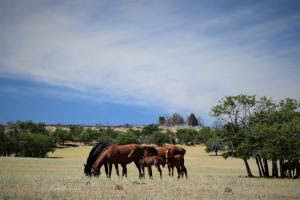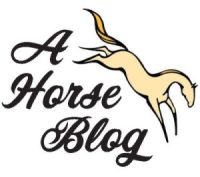Last Updated on March 9, 2023 by adminahb

YREKA, CA, US, March 8, 2023 /EINPresswire.com/ — Wild Horse Fire Brigade (WHFB) is a California based all volunteer 501c3 nonprofit public benefit corporation that has developed a novel “nature based” solution that will help prevent catastrophic wildfire, and at the same time help save and protect America’s wild horses. This innovative plan also reduces climate altering wildfire smoke by natural carbon cycling and sequestering carbon compounds into soils and plants.
The Evolution of Catastrophic Wildfire
Abundant published science and empirical experience prove that when native species herbivores (deer, elk, and wild horses) lived on the western landscape in proper population densities just 40 years ago, catastrophic wildfires were rare. That is because those millions of large-bodied herbivores had been eating approximately 3.2 million tons of annually occurring grass and brush that are now fueling catastrophic wildfires.
Today, native herbivore populations have collapsed due to mismanagement. Deer populations in California and Oregon alone are down about 3 million animals, which are now missing from the landscape due to several factors, including over-hunting and trophy hunting that leads to genetic decline, disease, vehicular accidents, and poaching. The relatively few remaining deer are now also subject to disproportionate depredation by apex predators and additional losses from the evolution of catastrophic wildfire. All of these issues can be resolved, but will require decades of better management.
Right now, according to Wyoming Public Media, over 60,000 American mustangs are languishing in wasteful taxpayer funded government holding pens, and roundups are continuing at an alarming pace. Wild Horse advocates and their lawyers have alleged that nearly a thousand protected wild horses have ended up in a horrific slaughter pipeline according to another article by GreenWire: https://www.eenews.net/articles/documents show blm wild horses sold to slaughter advocates say/.
At the same time, wildfires continue to rage across our Western states year after year, causing billions in losses. WHFB envisions repurposing these mustangs via humane relocation from areas of conflict and from expensive off range holding facilities and placing them into ‘critical wilderness’ areas that are ecologically and economically appropriate, where their naturally evolved symbiotic grazing will mitigate annual vegetative growth that is a root cause of ongoing wildfire risk.
WHFB’s approach is a cost effective, ecologically sound natural resource management paradigm driven by a sustainable nature based solution that will help prevent catastrophic wildfire and climate impacting toxic smoke, along with many other proven benefits, including naturally recycling and sequestering carbon compounds into soils and plants. The plan is synergistic with the highest environmental socially conscious ESG standards.
The plan also facilitates more livestock grazing in appropriate areas as it saves and protects America’s iconic wild horses, a goal desired by the millions of American horse enthusiasts and owners.
According to a report by the Congressional Research Service (https://crsreports.congress.gov/product/pdf/IF/IF11060), the US Bureau of Land Management’s (BLM) spending is approaching $150M/year of taxpayer money to hold publicly owned American mustangs in less than desirable off range facilities. WHFB’s plan can set them free, prevent wildfires, and save taxpayers millions of dollars annually by reducing the frequency, size, and intensity of wildfires. Reducing wildfires also reduces homelessness of families displaced by the thousands of homes burned annually.
How WHFB Works – Reestablishing Nature’s Grass and Brush Fuels Managers – The Herbivory
WHFB envisions repurposing American mustangs via humane relocation from areas of conflict and from expensive off range holding facilities and placing them into wilderness areas that are ecologically and economically appropriate, where their naturally evolved symbiotic grazing will mitigate annual vegetative growth that sustains ongoing wildfire risk. Each mustang that is deployed pursuant to this model will graze 5.5 tons of wildfire fuels annually and will harmonize with the natural environment, and while doing so, will economically eliminate one of the root causes of wildfire: overgrown grass and vegetation.
The plan works via the natural maintenance of grass and brush wildfire fuels in remote wilderness areas beyond the Wildland Urban Interface (‘WUI’) via the introduction of large bodied herbivores (wild horses). This makes defensible spaces around homes and communities on or near the WUI far more effective.
Science supports the fact that vegetative fuel reduction reduces both the frequency, size, and intensity of catastrophic wildfire. Wild horses are native keystone herbivores in north America and reduce fuels at the rate of 5.5 tons per horse per year. They are symbiotic to forest ecosystems because they make trees fire resilient by grazing fuels under the trees they use for shelter year-round, and their scratching breaks off low limbs, also known as fire ladders. Wild horse droppings fertilize trees. and unlike ruminant livestock, horses don’t digest the majority of the native plant and grass seeds they eat, resulting in natural reseeding of native flora, which is beneficial to all wilderness ecosystems and resident fauna, right down to pollinators.
Another goal is to support the amendment of Section 1339 of the 1971 Free Roaming Wild Burro and Horse Protection Act, to allow federal managers to also directly rewild horses into suitable designated wilderness.
Please visit www.wildhorsefirebrigade.org for more information.
